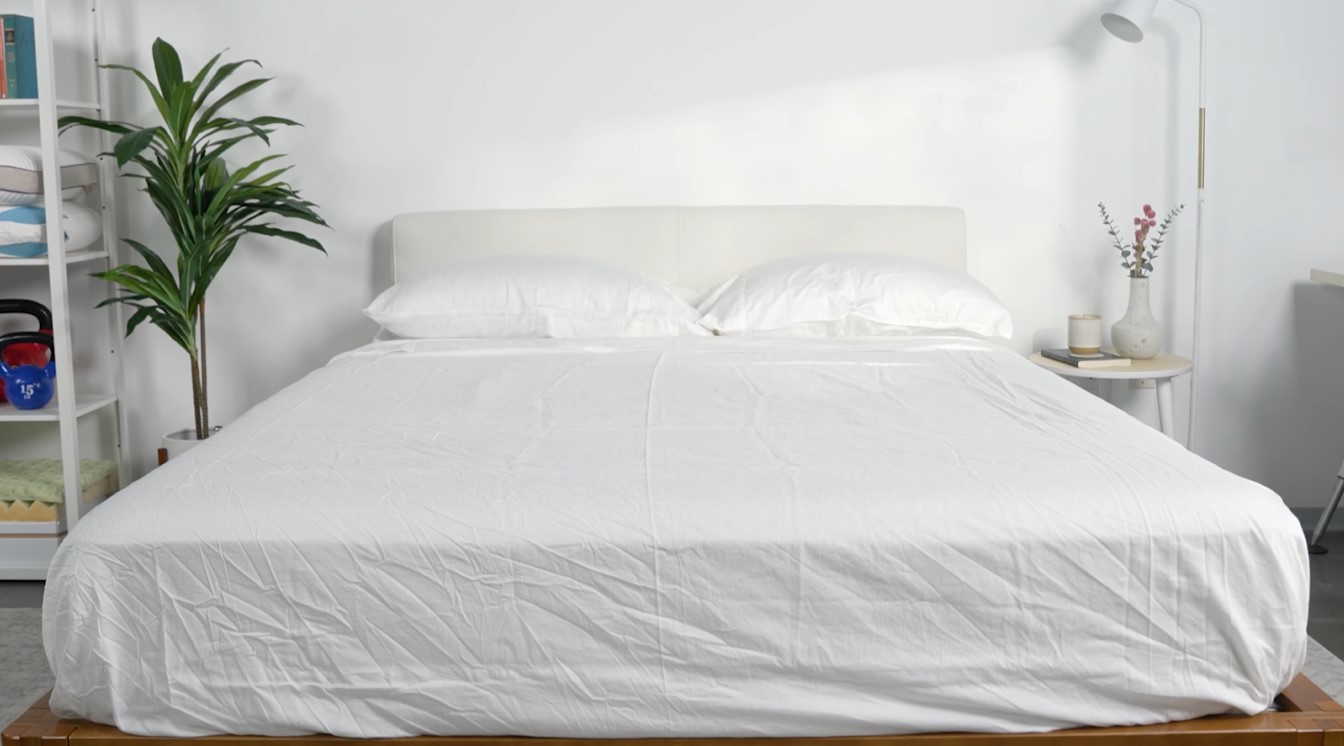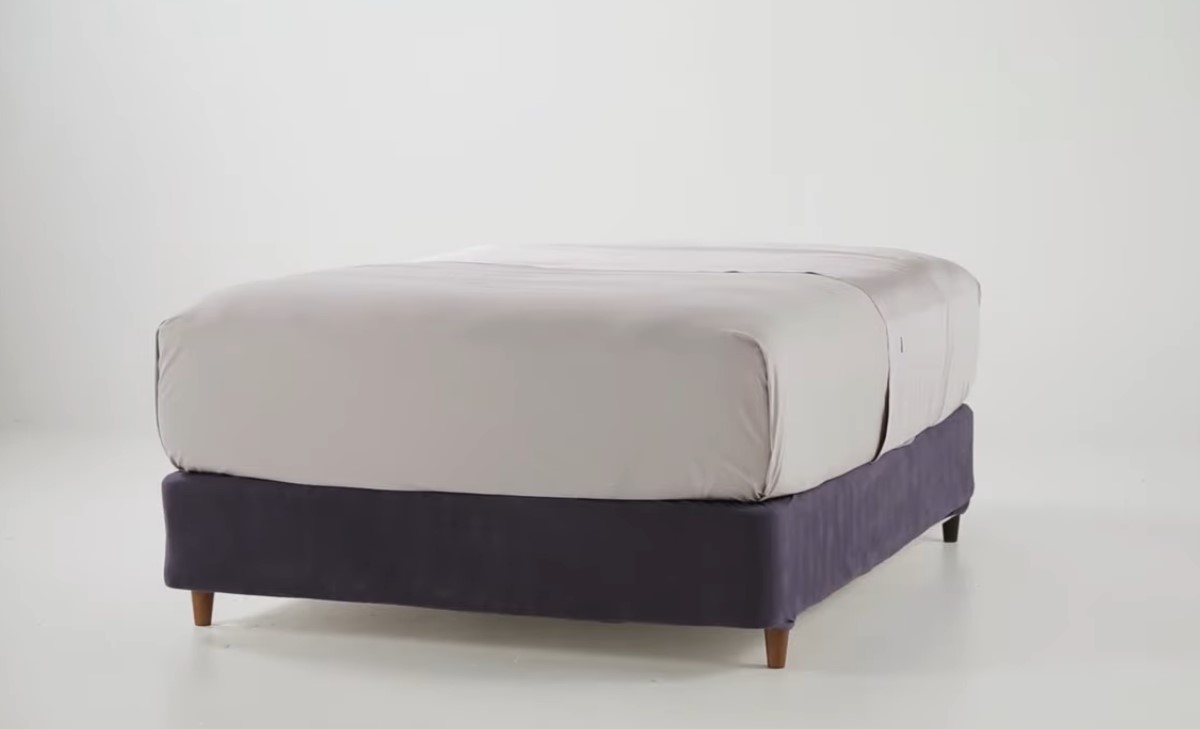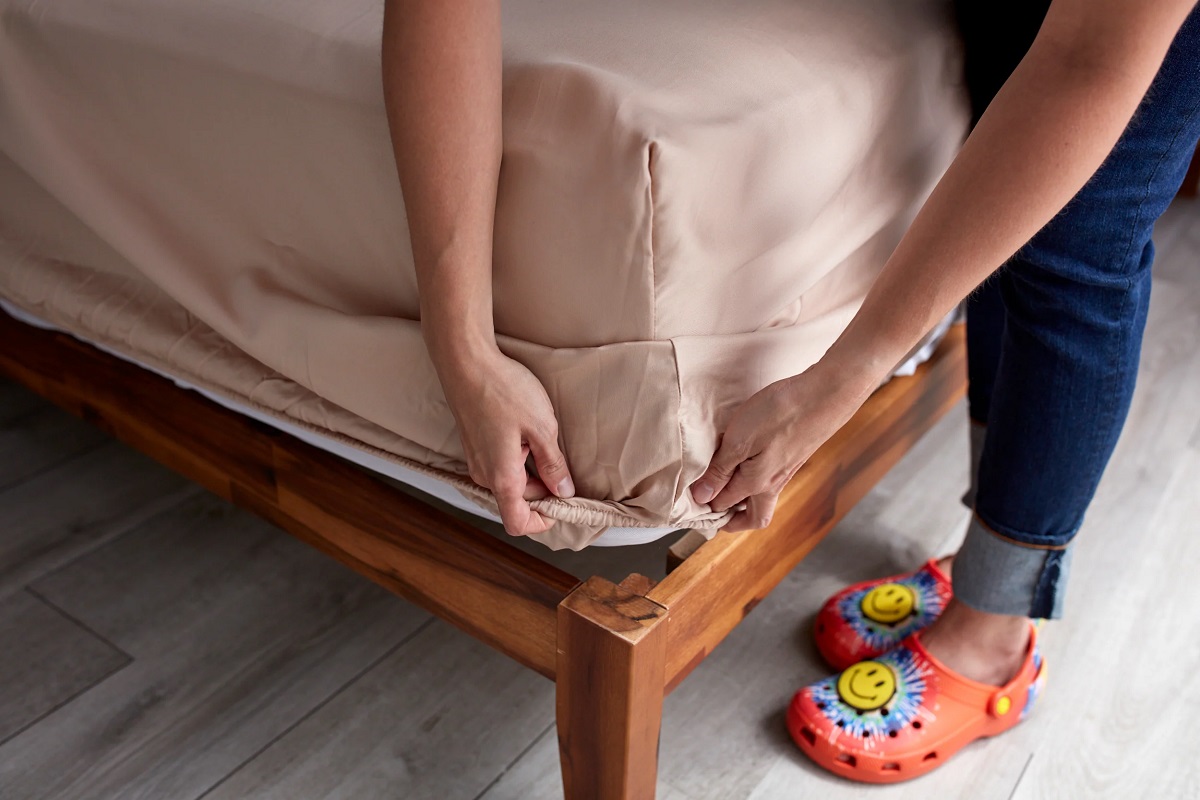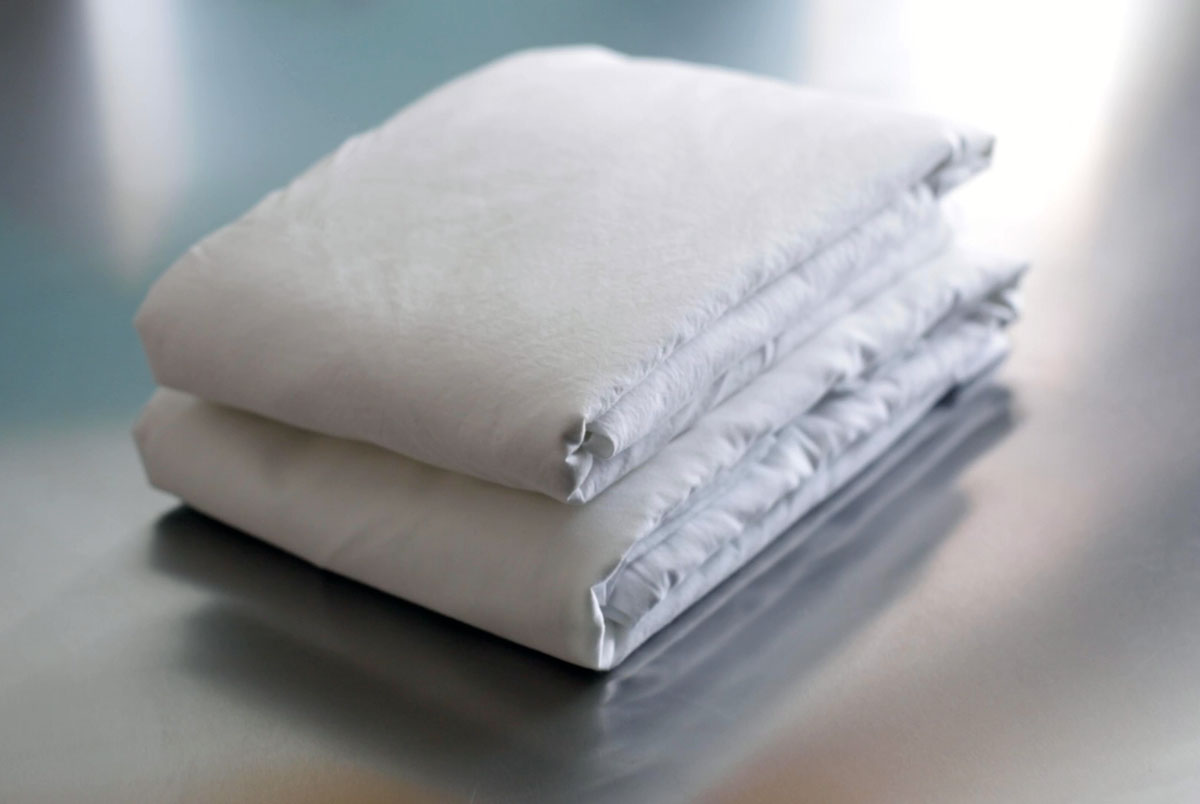Home>Storage Ideas>Bedroom Storage>How To Wash Bed Sheets For Crisp, Wrinkle-Free Results


Bedroom Storage
How To Wash Bed Sheets For Crisp, Wrinkle-Free Results
Modified: October 20, 2024
Discover the best way to wash your bed sheets and achieve crisp, wrinkle-free results with our helpful tips and tricks. Enhance your bedroom storage with this expert guide.
(Many of the links in this article redirect to a specific reviewed product. Your purchase of these products through affiliate links helps to generate commission for Storables.com, at no extra cost. Learn more)
Introduction
When it comes to creating a cozy and comfortable bedroom, clean and well-organized bed sheets play a crucial role. There is nothing quite like slipping into a freshly washed and crisply ironed bed at the end of a long day. But achieving that level of cleanliness and wrinkle-free perfection requires some know-how. In this article, we will guide you through the process of washing bed sheets to ensure you achieve crisp, wrinkle-free results every time.
From selecting the right laundry detergent to choosing the appropriate water temperature and machine cycle, we will provide you with expert tips and techniques to make the process a breeze. We will also delve into the art of drying bed sheets properly and offer guidance on ironing or steaming, depending on your preference. Lastly, we will explore the importance of storing clean bed sheets correctly to maintain their freshness and quality.
So, prepare to dive into the world of pristine bedroom storage and discover how to elevate your sleeping experience with perfectly clean and wrinkle-free bed sheets.
Key Takeaways:
- Elevate your sleeping experience with expert tips on washing and storing bed sheets for a crisp, wrinkle-free result every time. From selecting the right detergent to proper storage, achieve pristine bedroom linens effortlessly.
- Achieve the perfect balance of cleanliness and fabric care by choosing the right laundry detergent, water temperature, and washing machine cycle. Proper drying, ironing, and storage techniques ensure your bed sheets remain fresh and inviting.
Selecting the Right Laundry Detergent
Choosing the right laundry detergent is essential for achieving clean and fresh bed sheets. With various options available in the market, it can be overwhelming to make the right choice. Here are some factors to consider when selecting the ideal detergent:
Type of Detergent: There are different types of laundry detergents, including liquid, powder, and pods. Each type has its advantages, so choose the one that suits your preferences and the type of washing machine you have.
Fragrance: Consider whether you prefer scented or unscented detergents. While scented options can leave a pleasant smell on your bed sheets, some people may be sensitive to strong fragrances. Opt for a detergent that offers a fragrance you enjoy but is not overpowering.
Allergies and Sensitivities: If you or your family members have allergies or sensitive skin, look for a detergent that is hypoallergenic and free from dyes and harsh chemicals. These options are milder and less likely to cause irritation.
Stain-Fighting Power: Bed sheets can accumulate stains from sweat, oils, or food spills. To tackle these stains effectively, choose a detergent with strong stain-fighting power. Look for labels that mention stain removal capabilities.
Eco-Friendliness: For those who prioritize environmental sustainability, there are eco-friendly laundry detergents available. These are often made with biodegradable ingredients and come in recyclable packaging.
Water Hardness: Consider the hardness of your water when selecting a detergent. If you have hard water, which contains high levels of minerals, choose a detergent that is specifically formulated for hard water to prevent the buildup of residue on your sheets.
Once you have chosen the right detergent, always refer to the manufacturer’s instructions for the recommended amount to use. Using too much detergent can leave residues on your bed sheets, while using too little may not effectively remove dirt and grime. Finding the right balance will help ensure clean and fresh-smelling bed sheets every time.
Sorting and Preparing Bed Sheets for Washing
Proper sorting and preparation of your bed sheets before washing can make a significant difference in achieving optimal results. Follow these steps to ensure clean and well-maintained bed sheets:
Separate by Color and Fabric: Sort your bed sheets by color to prevent bleeding or color transfer during the wash. It’s best to wash dark-colored sheets separately from light-colored ones. Additionally, separate delicate fabrics such as silk or satin from sturdier materials like cotton or polyester.
Check for Stains or Spots: Before washing, inspect your bed sheets for any stains or spots. Treat them with a stain remover or pre-wash product, following the instructions indicated on the product label. This step will help ensure that the stains are effectively removed during the wash cycle.
Remove Pillowcases and Shams: Take off pillowcases and shams from your bed sheets and wash them separately. This allows for a more thorough and even cleaning process, as pillowcases tend to accumulate oils from hair and facial products.
Secure Buttons or Zippers: If your bed sheets have buttons, zippers, or any other fasteners, make sure to secure them before washing. This will prevent the fasteners from snagging on other items in the wash and potentially damaging the sheets.
Pre-Treat Oily or Greasy Areas: Pay special attention to areas prone to oils or greasy residues, such as pillowcase corners or the area where your head rests. Pre-treat these areas with a fabric-safe degreaser or detergent to ensure thorough cleaning.
Gather Similar Items: Group similar bed sheets together to ensure a balanced load in the washing machine. This helps prevent the sheets from becoming tangled and ensures a more effective cleaning process.
Shake Off Excess Debris: Give your bed sheets a gentle shake to remove any loose debris, such as crumbs or pet hair, before placing them in the washing machine. This simple step helps avoid clogging the machine’s filter and ensures a cleaner wash.
Follow Care Instructions: Always refer to the care instructions provided by the manufacturer. These instructions will guide you on the appropriate water temperature, machine cycle, and any other specific recommendations for washing your bed sheets.
By following these sorting and preparation steps, you can help ensure that your bed sheets receive the optimal care they deserve during the washing process. This sets the stage for achieving fresh, clean, and inviting bed linens that will enhance your sleep experience.
Choosing the Appropriate Water Temperature
Selecting the right water temperature for washing your bed sheets is essential to ensure effective cleaning without compromising the fabric’s integrity. Here are some guidelines to help you determine the appropriate water temperature:
Hot Water: Hot water is best suited for white or light-colored bed sheets, as it helps remove stains and kill bacteria effectively. It is particularly useful for heavily soiled sheets. However, be cautious when using hot water on delicate fabrics, as it can cause shrinking or damage.
Warm Water: Warm water is a safe and versatile option for most bed sheets. It effectively removes dirt and grime without causing significant damage to the fabric. It is a suitable choice for colored or patterned sheets that are not heavily soiled.
Cold Water: Cold water is ideal for preserving the color and quality of your bed sheets. It helps prevent shrinkage and fading, making it suitable for delicate or dark-colored sheets. Cold water is also energy-efficient, as it requires less energy to heat.
Consider Fabric Type: Different fabric types have specific temperature requirements. For example, cotton and linen can withstand hot water, while silk and satin should be washed using cold water. Always refer to the care instructions provided by the manufacturer for the recommended water temperature for each fabric type.
Balance Cleaning and Preservation: If you want to strike a balance between effective cleaning and preserving the longevity of your bed sheets, opt for warm water. It provides adequate cleaning power without causing unnecessary wear and tear on the fabric.
In addition to choosing the right water temperature, it is essential to select a high-quality laundry detergent that can perform well at your chosen temperature. This will ensure that your bed sheets are thoroughly cleaned and freshened while maintaining their softness and longevity.
By considering these factors and making an informed decision about the water temperature, you can effectively clean your bed sheets while keeping them in optimal condition for a longer period. Remember to always follow the care instructions provided by the manufacturer to achieve the best results.
To achieve crisp, wrinkle-free bed sheets, wash them in warm water with a gentle detergent. Tumble dry on a low heat setting and remove promptly to avoid wrinkles. Iron if necessary for a polished finish.
Using the Correct Washing Machine Cycle
Choosing the right washing machine cycle is crucial to ensure that your bed sheets are cleaned thoroughly while also preserving their quality. Here are some guidelines to help you select the correct washing machine cycle:
Regular or Normal Cycle: This is the standard cycle for everyday laundry. It is suitable for most bed sheets that are not heavily soiled or stained. The regular cycle provides a good balance between cleaning power and preserving the fabric.
Gentle or Delicate Cycle: The gentle or delicate cycle is designed for more delicate fabrics such as silk or satin. It uses slower agitation and shorter spin cycles to minimize the risk of damage. Use this cycle for your delicate bed sheets to ensure their longevity.
Heavy-Duty or Stain-Removal Cycle: For bed sheets that are heavily soiled or stained, opt for a heavy-duty or stain-removal cycle. This cycle provides more vigorous agitation, longer soak times, and increased water temperature to tackle tough stains and dirt. However, be cautious when using this cycle on delicate fabrics, as it may cause damage.
Quick Wash or Express Cycle: If you are short on time and your bed sheets are lightly soiled, you can opt for the quick wash or express cycle. This cycle is designed to clean clothes quickly by using shorter wash and rinse times. However, keep in mind that this cycle may not provide a thorough cleaning for heavily soiled sheets.
Extra Rinse Cycle: To ensure that all detergent residue is removed from your bed sheets, consider using the extra rinse cycle. This cycle provides an additional rinse to eliminate any lingering detergent, leaving your sheets fresh and free from residues.
Size and Load Capacity: It’s important to consider the size and load capacity of your washing machine. Overcrowding the machine can prevent proper agitation and cleaning. If you have a large set of bed sheets, it may be necessary to split the load into two cycles or use a commercial-sized machine.
Always refer to the instruction manual provided by the washing machine manufacturer for specific guidance on available cycles and their recommended use. Additionally, be sure to follow the care instructions on your bed sheets regarding water temperature, cycle selection, and any other specific recommendations.
By selecting the appropriate washing machine cycle, you can ensure that your bed sheets are thoroughly cleaned while also maintaining their quality and longevity. Regular and proper maintenance will help keep your bed sheets looking fresh and inviting, enhancing your overall sleep experience.
Drying Bed Sheets Properly
Properly drying your bed sheets is just as important as washing them to maintain their quality and ensure they remain fresh and free from wrinkles. Follow these tips to dry your bed sheets effectively:
Check Care Labels: Before drying your bed sheets, always check the care labels for specific instructions. Some sheets may require air-drying or have temperature limitations, so it’s important to follow these guidelines for best results.
Shake Out Excess Water: After removing your bed sheets from the washing machine, give them a gentle shake to remove any excess water. This step helps reduce drying time and prevents creasing.
Skip the Fabric Softener: Avoid using fabric softener on your bed sheets as it can leave a residue that reduces their absorbency and can affect their softness. If you want to add a fresh scent, consider using a dryer sheet specifically made for fabric softening.
Choose the Right Drying Temperature: Selecting the appropriate drying temperature is essential to prevent shrinkage and maintain the quality of your bed sheets. If possible, opt for a low-heat or delicate setting to minimize damage to the fabric.
Remove Sheets Promptly: As soon as the drying cycle is complete, promptly remove your bed sheets from the dryer. This prevents them from wrinkling due to prolonged exposure to heat and allows for easier ironing or folding.
Hang or Lay Flat: If your bed sheets are prone to wrinkling or if you prefer a smooth, crisp finish, consider hanging them on a clothesline or laying them flat on a clean surface to air dry. This method can help reduce wrinkles and maintain the integrity of the fabric.
Ironing or Steaming: If you desire perfectly wrinkle-free bed sheets, you can iron them using a low or medium heat setting. Make sure to follow the care instructions regarding ironing temperatures, especially for delicate fabrics. Alternatively, you can use a garment steamer to remove wrinkles without direct contact with the fabric.
Storage: Once your bed sheets are fully dry and wrinkle-free, store them in a clean, dry space to maintain their cleanliness and freshness. Consider folding them neatly or using storage bags to keep them protected from dust and dirt.
By following these tips, you can ensure that your bed sheets are dried properly, preserving their quality and appearance. Whether you prefer air-drying or using a dryer, the goal is to achieve clean and well-maintained bed sheets that are ready to be placed on your bed for a restful night’s sleep.
Ironing or Steaming for Wrinkle-Free Sheets
For those who crave the crisp, wrinkle-free look and feel of bed sheets, ironing or steaming is the key to achieving that polished finish. Here’s a guide on how to iron or steam your sheets to eliminate wrinkles:
Prepare Your Iron or Steamer: Ensure that your iron or garment steamer is clean and in good working condition. Check the manufacturer’s instructions for the appropriate settings and heat levels suitable for the fabric of your bed sheets.
Start with a Clean, Dry Surface: Before ironing or steaming, make sure your bed sheets are clean and fully dry. Wrinkles will be easier to remove if the fabric is not damp.
Adjust the Temperature: Depending on the fabric of your bed sheets, adjust the temperature settings of your iron or steamer. Lower temperatures are suitable for delicate fabrics like silk or satin, while higher temperatures can be used for sturdier materials like cotton or polyester.
Ironing:
- Place your bed sheet on an ironing board or a flat, clean surface.
- Start ironing from one corner of the sheet and work your way across, using smooth and even strokes.
- Be mindful of any decorative elements, buttons, or embroidery on the sheet, ironing around them to avoid damage.
- Pay attention to stubborn wrinkles, giving them extra attention by slightly dampening them with water or using a spray bottle filled with water. Then, press the iron over the dampened area.
- Continue this process until you have ironed the entire bed sheet, including the edges.
Steaming:
- Hang your bed sheet on a hanger or lay it flat on a clean surface.
- Hold the garment steamer a few inches away from the fabric and move it up and down, working across the sheet to steam the wrinkles away.
- If you encounter stubborn wrinkles, target them with more steam, allowing the heat and moisture to relax the fabric and smooth out the creases.
- Keep the bed sheet taut while steaming to achieve the best results.
Cool and Fold: Once you have ironed or steamed your bed sheets, allow them to cool down completely before folding or placing them on your bed. This helps prevent new wrinkles from forming due to the heat.
By following these ironing or steaming techniques, you can achieve beautifully crisp and wrinkle-free bed sheets. Whether you prefer the precision of ironing or the convenience of steaming, your sheets will look and feel fresh, inviting, and ready to enhance your sleep experience.
Storing Clean Bed Sheets
Properly storing your clean bed sheets is essential to maintain their cleanliness, freshness, and ease of use. Here are some tips for storing your bed sheets:
Keep Bed Sheets Clean and Dry: Ensure that your bed sheets are completely dry before storing them. Moisture can lead to mildew or unpleasant odors. If necessary, allow them to air dry completely before folding and storing.
Fold Neatly: Take the time to fold your bed sheets neatly to minimize wrinkles and save space. Start by matching the corners and sides, then fold them in thirds or quarters, depending on the size of the sheet. Smooth out any wrinkles as you fold.
Label and Organize: Consider labeling your folded bed sheets to make it easier to find the right set when needed. You can use tags, sticky notes, or clear bins to keep everything organized. Sort by size or by color to fit your storage preferences.
Protect from Dust and Dirt: To keep your bed sheets clean while in storage, use storage bags, vacuum-sealed bags, or zippered plastic containers. These will help protect them from dust, dirt, and potential pests.
Avoid Direct Sunlight: Store your bed sheets in a cool, dry place away from direct sunlight. Prolonged exposure to sunlight can cause fading and discoloration over time.
Rotate and Use Regularly: To prevent any one set of bed sheets from becoming unused for an extended period, rotate your bed sheets regularly. This helps ensure even wear and use across your collection.
Freshen Up Before Use: Before placing your stored bed sheets back on your bed, give them a quick shake and consider airing them out for a few hours. This will help remove any slight musty odors that may have developed during storage.
Keep Extra Pillowcases Handy: If you have extra pillowcases that match your bed sheets, store them with the corresponding sheets for easy access and convenience.
By following these tips, you can keep your bed sheets clean, organized, and ready to use whenever you desire a fresh and comfortable bed. Proper storage not only ensures the longevity of your bed sheets but also allows for a seamless and enjoyable experience each time you change your linens.
Frequently Asked Questions about How To Wash Bed Sheets For Crisp, Wrinkle-Free Results
Was this page helpful?
At Storables.com, we guarantee accurate and reliable information. Our content, validated by Expert Board Contributors, is crafted following stringent Editorial Policies. We're committed to providing you with well-researched, expert-backed insights for all your informational needs.















0 thoughts on “How To Wash Bed Sheets For Crisp, Wrinkle-Free Results”